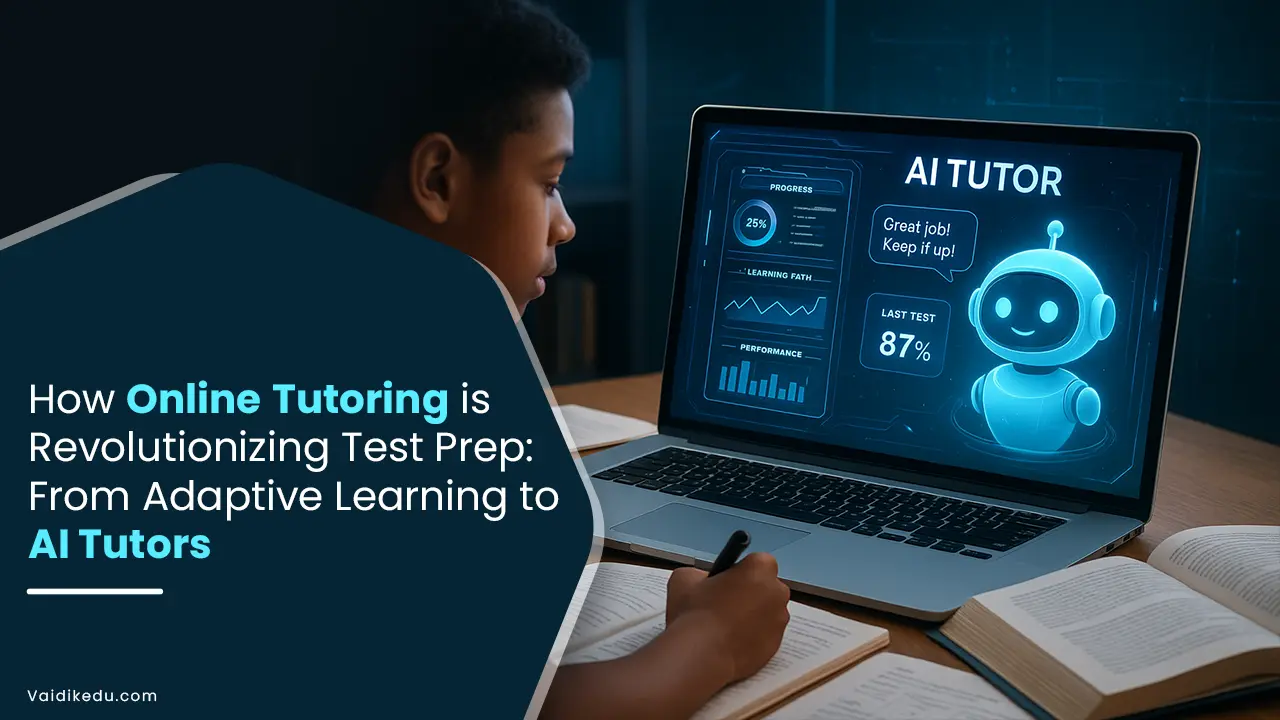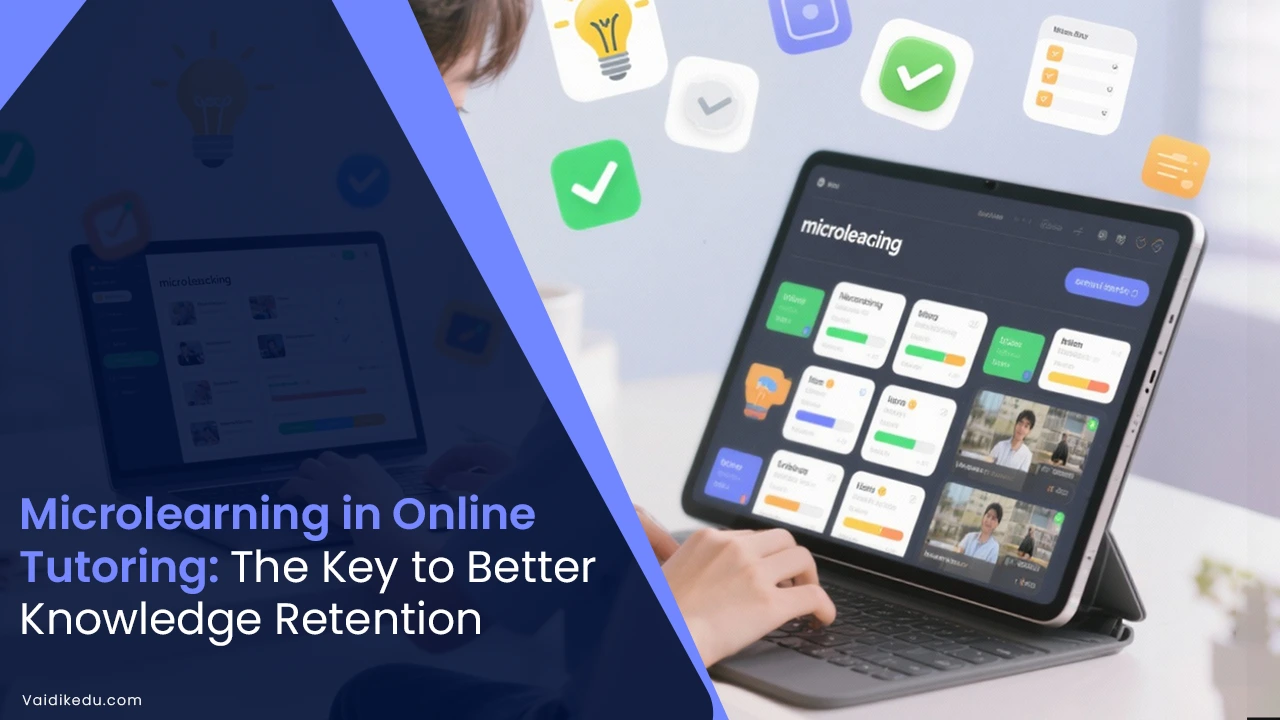Education has undergone a swift change toward online learning. So, education has to make engagement with the students the primary requirement to achieve learning. Among various engagement-increasing strategies, the most effective strategy is gamification: the use of elements of the game in non-game contexts, like education.
It encourages motivation, participation, and knowledge retention in online tutoring because learning becomes fun and interactive. Functions such as points, leaderboards, badges, quizzes, and role-playing activities encourage an active student in the learning process.
From this blog, one will understand how gamification enhances online tutoring, its ingredients, applications in real life, advantages, disadvantages, and practical ways of implementation.
The Role of Gamification in Online Tutoring
Gamification refers to the process of applying intrinsic motivation, reward-based reinforcement, and competition principles to make learning more enjoyable. It transforms the passive process of learning into an active, hands-on experience where more students will be interested in participating and memorizing more knowledge.
The Major Elements of Gamified Learning include:
Points and Rewards: In gamified learning, students earn points for performing tasks, quizzes, or challenges.
Leaderboards: The students are ranked against each other, and it encourages healthy competition.
Badges and Achievements: These are visual indicators of progress, which boosts confidence.
Storytelling and Role-Playing: Immersive learning where the student becomes an actor in the educational story.
Time-Based Challenges: It encourages quick thinking and reinforces the use of time.
Instant Feedback: It helps a student track his progress and adapt his learning strategies accordingly.
Through all these aspects, online tutoring is made interactive for different kinds of learners, which keeps the student motivated as well.
Science Behind Gamification And Learning
Educational gamification is scientifically supported by research in cognitive psychology, neuroscience, and behavioral science. It has been proven that gamified learning:
- Activates Dopamine Release: Achievements and rewards trigger the brain’s pleasure centers, which reinforce learning behaviors.
- Promotes Active Learning: Interactive challenges require the students to apply concepts rather than passively absorbing information.
- Strengthens Memory Retention: Engaging, hands-on activities strengthen neural connections, enhancing recall.
- Fosters intrinsic Motivation: The students like to learn when they feel a sense of accomplishment and progress.
With the help of game mechanics and cognitive principles, online tutors can design specific and effective learning experiences.
Gamification Applications in Online Tutoring
1. Language Learning Platforms
Some of the apps that teach languages through gamification include Duolingo and Memrise. Some of the features include streak rewards, badges, and competitive leaderboards that promote consistent learning.
2. STEM Education
Through Vaidik Eduservices, Prodigy, and Quizizz, individuals can engage in game-based interaction through STEM learning activities like quizzes, math battles, and problem-solving missions.
3. Virtual Classrooms
Online tutoring platforms utilize gamification through interactive whiteboards, live quizzes, and simulation-based learning to increase student engagement.
4. Corporate and Skill-Based Training
Gamified training, such as Codecademy (coding) and Coursera (professional skills), involves challenges and interactive lessons to keep learners motivated.
Advantages of Gamification For Online Tutoring
1. Student Engagement
Gamification makes learning fun, and the students do not get bored or disengaged in online classes.
2. Better Retention of Knowledge
Students who engage in interactive activities retain knowledge better than those who rely on passive learning methods.
3. Increased Motivation and Commitment
Rewards, achievements, and leaderboards create a sense of purpose and progress, keeping students motivated.
4. Self-Paced Learning
Gamified elements allow students to learn at their own pace, making education more inclusive.
5. Boosts Collaboration and Social Learning
Gamified group challenges and competitions foster teamwork and communication skills.
6. Reduces Fear of Failure
Unlike traditional learning, where mistakes can be dissuading, gamification normalizes trial and error, so students are more likely to take risks and learn from their mistakes.
Challenges in the implementation of gamification in online tutoring
1. Over-Gamification Can Distract From Learning
Solution: Strike a balance between game mechanics and educational content to be sure that learning is the main focus.
2. All Students Do Not React Similarly To Gamification
Solution: Using the combination of game-based and more traditional approaches to teaching works for all of them.
3. Costs to Develop and Implement
Solution: Use accessible gamification applications and ready-to-use tools, like Kahoot! or Quizizz. Avoid costly customization.
4. Fair Competition Guarantee
Solution: Tiered challenge and differentiated pathways to fit a student’s mastery level.
Excellent Practices in Game-Based Online Tuition
- Clear learning objectives need to be defined at the very outset before the game mechanisms are initiated.
- A variety of gamification elements- such as quizzes, storytelling, challenges, and rewards- can keep the experience interesting and dynamic.
- Incorporating AI and adaptive learning will keep students interested as the platform adjusts the difficulty level based on performance.
- Team challenges or collaborative activities provide opportunities for peer interactions and social learning skills.
- Data analytics that monitors progress, using AI-driven insights, helps in identifying the strengths and weaknesses of the student.
- Regular updating and innovation: Keep the pupils contesting with new challenges, themes, and incentives.
The Future of Gamification in Online Tutoring
As time passes, online tutoring gamification will become even more developed and personal shortly. Some of the emerging trends are as follows:
1. Adaptive Learning Powered by Artificial Intelligence
AI is changing the face of gamification by allowing for adaptive learning experiences that are uniquely tailored to the needs of each student. With AI, it is possible to analyze performance data and adjust challenges, quizzes, and rewards according to a student’s progress. This ensures personalized learning paths that keep students engaged and motivated.
2. Virtual and Augmented Reality (VR & AR)
Gamified learning is further pushed to new levels by immersive technologies such as VR and AR. Simulations driven by VR will allow students to experience real-life scenarios such as historical events or science experiments in a controlled environment.
On the other hand, AR overlays digital content on top of the real world, thereby making subjects such as anatomy, geography, and engineering interesting.
3. Blockchain-Based Credentialing
Beyond increasing learning engagement, gamification has been applied even up to certification and credentialing. Blockchain technology was employed in dispensing tamper-proof digital badges and certificates for the student’s achievements. In this manner, students’ learning progress is assured as verifiable in both academic and professional settings.
4. Game-Based Learning Platforms
More and more institutions of learning integrate game-based platforms, making an entire course a full-scale experience. It transforms video game-like elements, such as stories, role-playing, and challenges, giving faces to progress so that learners have increased immersion and fun.
5. Social and Collaborative Learning
In gamification, social learning with teams has been brought into reality wherein people work together to complete various projects and in the process of working towards their objectives, they keep comparing them through a leaderboard and achieving goals with peers and making achievement lists.
Challenges And Ethical Issues in Gamified Learning
Gamification has numerous advantages. However, there are many challenges and ethical issues that educators need to face,
1. Over-Gamification
Over-reliance on rewards and points is going to draw the focus away from actual learning objectives. The objective of education will be defeated if students become more focused on winning than on understanding the concepts. The gamic balance is essential. The game mechanisms must supplement not replace the fundamentals of learning strategies.
2. Digital Divide and Accessibility Issues
Not all students have access to high-speed internet, modern devices, or gamified platforms. This creates a gap in learning opportunities. Educators must ensure that gamification remains inclusive and accessible by offering alternative engagement methods.
3. Fairness in Competition
The presence of leaderboards and competition would create a lot of unhealthy pressure on such students. It is for the tutors’ attention that these learners work more on themselves instead of working with others at eye level, with features that create a comfortable environment, including tiered difficulties and achievement rewards.
4. Data Privacy and Security
Gamified learning platforms collect data from students to provide a personalized experience. However, this raises several privacy and security concerns. Teachers and learning platforms have to abide by data protection regulations and ensure transparency of data usage.
How Tutors Can Effectively Implement Gamification
For successful gamification of online tutoring, tutors should observe best practices for maximizing engagement and learning outcomes:
1. Clear Learning Objectives
Gamification should not be used as entertainment but should be more precisely tied to learning objectives. Tutors should identify what each gamified activity expects from their students.
2. Combine Game Mechanics
Ditch the points and leaderboards but combine these with other elements, such as:
Quests and Missions: Provide challenge-based learning.
Badges and Certificates: Celebrate student progress and achievements.
Role-Playing and Storytelling: Immerse the learner in the context of an engaging story.
3. Make the Learning Relevant to the Learner
Each student has a different taste and responds accordingly to different gamification. It is the job of the tutors to track the progress of students and set challenges according to the performance level of the students. AI-driven analytics can help in tracking the progress and learning gaps.
4. Encourage Collaborative Learning
Introduce team-based activities, cooperative problem-solving, and peer challenges to bring a sense of community. It encourages healthy engagement and social interaction in virtual classrooms.
5. Provide Regular Feedback
Giving instant feedback works best for gamification. Automated quiz results, comments by tutors, or real-time analytics of their performance can do the trick to enhance their understanding of mistakes and their subsequent improvement.
6. Fun but Not Meaningless
Avoid forced and repetitive gamification. Introduce new challenges, seasonal events, and fresh content to keep the students on the board. Learning must be rewarding in every sense and not just an act of playing a game.
Conclusion
Gamification has changed online tutoring by making learning more interactive, engaging, and effective. Game elements-integrating points, leaderboards, badges, and storytelling in learning can motivate students, aid knowledge retention, and enable active participation.
While there is still a big gap in implementing such, planning can make much better use of gamification through proper and proper tools. It will make education in a technological future more accessible, more personal, and much more delightful to learn and have fun across the world.
Frequently Asked Questions
Gamification in online tutoring refers to the incorporation of game-like elements such as points, badges, leaderboards, and interactive challenges to make students more engaged and motivated.
Yes. Research on gamification has shown better motivation, retention, and problem-solving ability because it is fun and engaging and makes learning interesting and interactive.
Gamification can be applied to any subject, like math, science, language, history, or even professional skills.
A mix of educational content needs to be infused with game mechanics and personalized challenges given to the learners in encouraging cooperation among themselves, and the use of analytics on their progression, among others.
In using gamification, education would take tutoring online. It will then change boring sessions into something thrilling, fun, and productive learning as it gets higher motivation among its students and hence interested to learn more.









